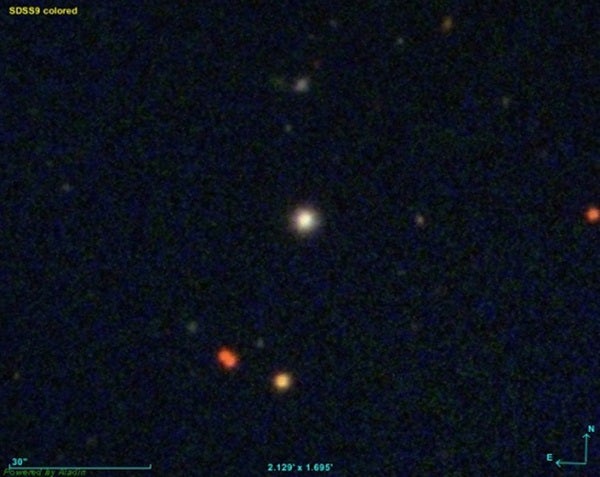The importance of the mass of first-generation stars
First-generation stars are objects formed in the early universe — within a few hundred million years after the Big Bang — from gas clouds containing only hydrogen and helium. They are the probable precursors of the formation of the universe’s structure and chemical enrichment; large stellar systems, like galaxies, formed later.
Numerical simulations have made significant progress in understanding the formation of the first stars. Recent simulations suggest that a small fraction of stars with masses exceeding 100 times that of the Sun could have formed in the early universe, even though the large majority of first stars formed with masses of 10 to 100 times that of the Sun. Their strong UV radiation and energetic explosions are likely to have had a significant impact on the evolution of stellar systems.
Signatures of first stars recorded by low-mass Milky Way stars
Supernova explosions ejected elements formed by the first massive stars and dispersed them into the gas that formed the next generations of stars.
Stars with masses slightly less than the Sun’s have long lifetimes, long enough that they are still shining. The Milky Way contains such low-mass stars with low overall metal content, including the elements produced by the first massive stars. The distinctive chemical abundance patterns of these stars can be used to estimate the masses of the first stars.
Over the past 30 years, astronomers have conducted large-scale investigations to find low-mass, metal-poor stars formed in the early universe. Follow-up spectroscopic studies, which measured their chemical abundances, have identified stars that recorded the abundance patterns associated with the first stars that had several tens of solar masses and produced large amounts of carbon and other light elements. However, no previous research of low-mass metal-poor Milky Way stars has found the signature of supernova explosions of massive stars with more than 100 solar masses, which synthesize large amounts of iron but little carbon.
Discovery of a low-mass star with unique chemical abundance ratios
The current team of researchers used the High Dispersion Spectrograph mounted on the Subaru Telescope to conduct a high-resolution spectroscopic follow-up of a large sample of low-mass, metal-poor stars and discovered a star, SDSS 001820.5-093939.2 (SDSS J0018-0939), that exhibits a peculiar set of chemical abundance ratios. Whereas the star contains an amount of iron 300 times lower than the Sun’s, it is significantly deficient in lighter elements such as carbon and magnesium. The extremely low abundances of elements other than iron indicate that this star formed directly from a hydrogen gas cloud that contained elements dispersed by a first-generation massive star.
Nucleosynthesis models for supernova explosions of massive stars, which successfully reproduce the abundance ratios found in most of the early-generation stars previously known do not readily explain the chemical abundance ratios observed in the newly discovered star. Rather, explosion models of massive stars can explain both the relatively high abundance ratio of iron as well as the low abundances of lighter elements. This means that this star most likely preserves the elemental abundance ratios produced by a first-generation massive star.
Impact of this study
The discovery of a star that could have recorded the chemical yields of a first-generation massive star will stimulate further modeling of the evolution of massive stars and the nucleosynthesis processes that occurred during their explosions. If more detailed modeling of the elemental abundance patterns in this star confirms the existence of massive stars, this new discovery will help focus our understanding of the formation of the first stars and the birth of the elements.
The strong UV radiation, energetic explosions, and production of heavy elements from massive stars influence subsequent star as well as galaxy formation. If stars with masses up to 1,000 solar masses existed, their remnants are probably black holes with several hundred solar masses, which may have formed the “seeds” of supermassive black holes, such as found in the galactic center.
Further research to find early generations of low-mass, metal-poor stars is necessary to estimate the proportion of massive stars among the first stars. If massive stars are relatively common, next-generation large telescopes such as the Thirty Meter Telescope (TMT) and the James Webb Space Telescope (JWST) will have the potential to directly detect groups of such first stars in studies of the most distant galaxies.










